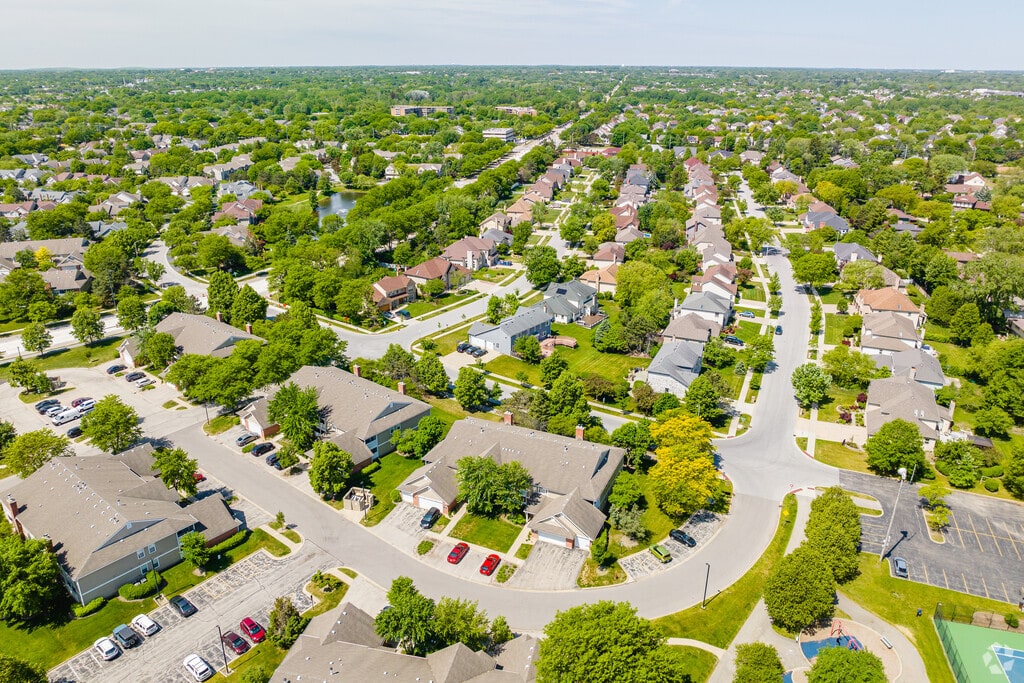Schaumburg’s Big Mixed-Use Plans Could Reshape Its Commercial Real Estate Market
Schaumburg, one of Chicago’s most dynamic suburbs, is poised for a significant transformation with ambitious mixed-use development plans. These projects aim to create vibrant, walkable environments that combine residential, retail, office, and recreational spaces, breathing new life into aging properties and aligning with evolving market demands. For investors, developers, and businesses, this shift presents unique opportunities to capitalize on Schaumburg’s growing commercial real estate market.
Schaumburg’s Mixed-Use Vision
The village’s plans focus on converting underutilized retail and office spaces into modern, multi-use developments that cater to a live-work-play lifestyle. Key features include:
- Adding residential units near commercial amenities to meet demand for urban-style suburban living.
- Upgrading and repositioning office spaces to appeal to modern business tenants.
- Incorporating green spaces and walkability to enhance quality of life and attract professionals and families.
This vision reflects a strategic effort to revitalize Schaumburg’s core and position it as a model for suburban redevelopment.

The Impact on Schaumburg’s Commercial Real Estate
1. Positive Momentum in the Office Market
Schaumburg’s office leasing market, particularly for Class A properties, has seen encouraging momentum as businesses seek high-quality spaces with modern amenities. The mixed-use developments will complement this trend, providing office tenants with access to residential, retail, and dining options that enhance employee experience and workplace convenience.
2. Repurposing Outdated Properties
The redevelopment of older retail centers and office buildings into mixed-use spaces addresses Schaumburg’s need for modernization. By creating integrated spaces, developers can unlock the full potential of underperforming properties, increasing their value and appeal.
3. Increased Demand for Industrial Development
Schaumburg’s strategic location near O’Hare Airport, I-90, and I-290 has already established it as a logistics hub. The economic activity driven by mixed-use developments is expected to create additional demand for industrial space, particularly for last-mile distribution and supply chain facilities.
4. Strengthening Retail and Dining Sectors
By integrating retail and dining options into mixed-use developments, Schaumburg is creating spaces that appeal to residents, professionals, and visitors alike. This synergy will attract retailers and restaurants seeking high-traffic, modern environments to serve a growing customer base.
5. Attracting Young Professionals and Families
The addition of residential units near commercial hubs offers a compelling alternative to traditional suburban sprawl. Schaumburg’s growing appeal as a walkable, amenity-rich community could attract young professionals and families seeking suburban convenience with urban-style living.

Opportunities for Investors and Developers
Schaumburg’s redevelopment plans create multiple opportunities for those looking to participate in the suburb’s growth:
- Mixed-Use Development: Repositioning older office and retail properties into vibrant, multi-use spaces will be critical to meeting the market’s evolving needs.
- Modern Office Space: High-quality, Class A office spaces integrated into mixed-use developments are likely to benefit from strong leasing activity as businesses prioritize amenity-rich locations.
- Industrial Facilities: Increased economic activity and proximity to infrastructure provide significant opportunities for developers in logistics and industrial sectors.
- Retail Reinvestment: Redeveloped retail spaces with a focus on dining, entertainment, and experiential concepts can thrive as part of these projects.
Challenges and Considerations
- Infrastructure Needs: As development accelerates, Schaumburg must ensure its infrastructure—roads, utilities, and public transit—can accommodate growth.
- Balancing Development: Careful planning is needed to maintain equilibrium between residential, retail, office, and industrial space to avoid oversaturation in any sector.
- Competition: Schaumburg is not alone in pursuing suburban revitalization. Competing towns like Naperville and Oak Brook are also investing heavily in mixed-use development, making differentiation essential for success.

Schaumburg’s Competitive Edge
Schaumburg’s established economic foundation, strategic location, and proactive approach to redevelopment set it apart from neighboring suburbs. Its proximity to O’Hare Airport, major highways, and Chicago’s urban core continues to attract businesses and developers.
Notably, there is significant discussion among commercial real estate agents in Schaumburg regarding the positive momentum in the office leasing market, especially for Class A properties. These spaces are seeing heightened demand from businesses prioritizing modern office environments with easy access to retail and residential amenities.

The Path Forward for Schaumburg
Schaumburg’s ambitious mixed-use plans reflect a bold vision for the future—one that embraces modern urban design principles and positions the suburb as a regional leader in commercial real estate innovation. By fostering a dynamic mix of residential, office, and retail spaces, Schaumburg is creating an environment that appeals to businesses, residents, and visitors alike.
The village’s efforts to transform underperforming properties into high-value developments will not only strengthen its economic base but also enhance its appeal as a destination for top-tier tenants and residents. As the market continues to evolve, Schaumburg’s focus on walkability, quality office space, and sustainable growth will position it as a model for suburban success in the Chicagoland area.
For businesses, investors, and developers, Schaumburg’s revitalization represents a prime opportunity to capitalize on a community poised for long-term growth and commercial vibrancy.

